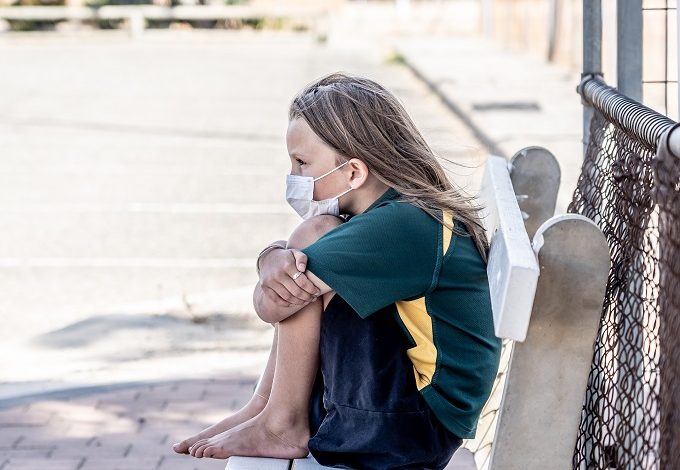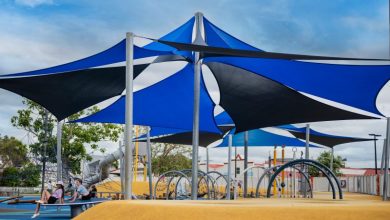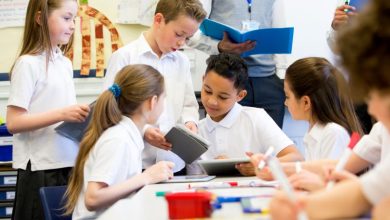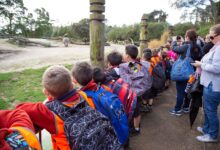Locked down but not out

Children in Aotearoa New Zealand have displayed great strength in the face of adversity, according to the world’s largest survey looking at the impact of Covid-19 restrictions on children’s health, wellbeing and education. The impacts of restrictions, lockdowns and mandates, however good for building resilience, will be far reaching, with only some so far being known.
The Education Review Office report on the impact of COVID-19 on principals and teachers, released in December, included a look at how Covid-19 has impacted enjoyment in work and workload. The report also set out examples of how schools can prepare for 2022 and some of the supports needed for teachers and principals.
Highlighting how teachers and principals ‘innovated and adapted in response to Covid-19’, it also revealed the ‘significant and worsening impacts of Covid-19 on teachers’ and principals’ wellbeing and workload’. It found, “Providing continuity of learning for students through repeated disruptions and supporting student and whānau wellbeing has taken a toll.”
There was evidence that teachers’ and principals’ wellbeing has declined, with impact particularly being felt by younger teachers, and principals of smaller schools. A quarter of principals reported needing more support for their wellbeing. ERO found clear challenges to wellbeing across the country but said schools in Auckland that have been more impacted were ‘of special concern’.
“Schools have, and continue to, adjust their practice to meet the challenges of Covid-19. As we move into 2022 further innovation will be required. Teachers and principals will need support to meet these challenges,” the report said.
This article is in our Term 1 print magazine, online here: https://www.schoolnews.co.nz/latest-print-issue/
Just one of the many of these resulting challenges is staffing in secondary schools, says Kate Gainsford, Chair of PPTA Te Wehengarua Secondary Principals Council.
She said, “The increase in the demands and expectations in schools has outstripped what the old staffing formula provides to match the task.”
Gainsford drew attention to research commissioned by the Secondary Principals Council earlier this year, which found the need for a new staffing model for secondary schools, to meet new and increasing needs.
“Schools have been facing increased pressure points over the past ten years with greater pastoral care needs and greater expectations for more community and whānau liaison.
“COVID-19 has added a whole new layer of urgency onto these existing pressures,” she said.
“Significant increases in workload have been shouldered in order to manage the implications for schools in a pandemic, whether it is for learning from home or in the classroom.”
The impact of COVID-19 on principals’ and teachers’ wellbeing is of particular concern, she said.
“These findings are consistent with other research carried out last year, by Deakin University (Melbourne), which found that Aotearoa New Zealand secondary school leaders experience very high demands at work particularly in situations where students, whānau and staff are experiencing heightened emotions.
“The issues outlined in this report show that the ways school are staffed need to change to reflect the changing needs of students, the workforces that they will be joining and the communities they live in.”
A survey was carried out as part of the country’s largest longitudinal study Growing Up in New Zealand, during Covid-19 restrictions in May 2020, in conjunction with the Ministry of Social Development and the Ministry of Education.
Growing Up in New Zealand research director, University of Auckland Professor Boyd Swinburn says nearly 2,500 10 and 11 year-old children took part in the survey, making it one of the largest studies globally to look at the impact of Covid-19 lockdown restrictions on children.
What came through loud and clear was the remarkable resilience and adaptability of New Zealand children to adjust to the restricted lifestyle, social isolation and uncertainty that Covid-19 restrictions imposed on them in 2020, says Prof Swinburn.
“However, it is clear that lockdowns are socially and emotionally challenging for some children and there is more that can be done to support them to weather the storm of any future restrictions. In particular, there should be a focus on better access to virtual mental health support and equitable access to devices for online learning,” he says.
Growing Up in New Zealand released two Life During Lockdown reports, one focused on health and wellbeing and the other focused on education. They offer a unique insight into the impact of Covid-19 restrictions on children’s lives because the study could draw on baseline data gathered from children when they were eight years of age.
Education domain leader of the Growing Up in New Zealand study, University of Auckland Senior Lecturer, Dr Kane Meissel says lockdown unsurprisingly resulted in increased screentime for most children, but two-thirds of children continued to feel connected to their school or kura.
Key findings from the Education Report include:
Nearly three-quarters of children reported a decrease in school satisfaction during the Covid-19 restriction compared with school satisfaction scores at eight-years of age.
More than two-thirds of children used devices every day for school or homework, with the average time spent in front of screens on weekdays being nearly five hours.
YouTube was the most popular app used by children and there was a high use of apps with 13+ restrictions, even though the children were aged 10 and 11.
More than 80% of children reported that people in their bubble were involved in their schoolwork several times a week or more.
Engagement with a range of activities, both school-related and non-academic, were key to boosting children’s enjoyment of virtual schooling.
Most children stayed in virtual contact with others, with 86% saying they were moderately or more connected to those outside their bubbles.
Dr Meissel says the findings have implications for any future lockdowns and the way in which virtual home learning is delivered.
“Involvement in activities, such as baking, chores, and outdoor pursuits, whether school-related or otherwise, were important predictors of school satisfaction. This demonstrates the importance of this kind of learning, together with family connectedness, in enhancing children’s wellbeing,” he says.
However, Dr Meissel says the research shows that education in lockdown was not a homogeneous experience, with lockdown learning exacerbating existing socio-economic and digital divides.
“Furthermore, schools need to be supported to tailor approaches to address the gaps which may have opened up for children who did not have a positive school or home experience in lockdown,” he says.
It seems strategies are needed to ensure equitable access to devices and online schooling options for those who may be missing out.










